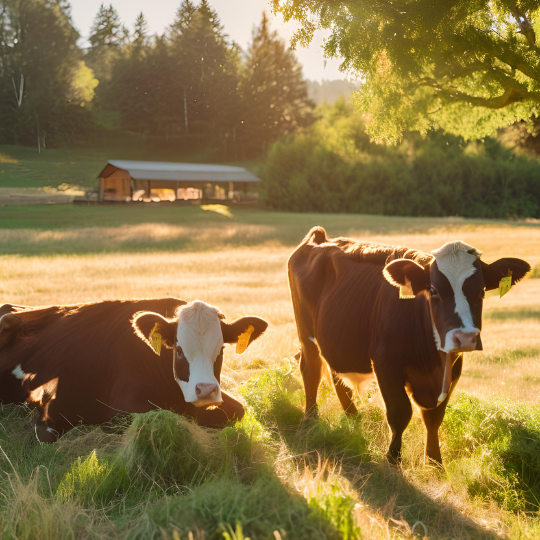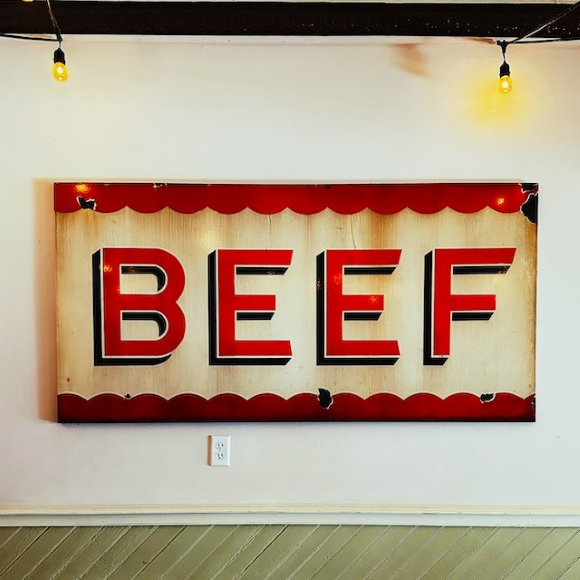The impact of branded beef programs on the U.S. market isn’t just about steaks, ribs, and burgers anymore. Nope, the way beef is produced and sold in the U.S. is evolving fast, and branded beef programs are leading the charge. These programs are turning your average steak into a premium product. One that speaks to your values and your taste buds.
From Certified Angus Beef (CAB) to organic and hormone-free options, these branded beef programs are shaking up the market, giving producers a chance to target niche audiences and rake in premium prices. It’s not just about slapping a logo on a package. It’s about offering something special that stands out from the crowd, whether you’re the one buying it or the one selling it. Let’s dive into how branded beef programs are reshaping the U.S. market for everyone involved.
Certified Angus Beef: A Pioneer in Branded Programs
Let’s be real, when you hear “Certified Angus Beef,” you probably think “premium.” And for good reason! Certified Angus Beef (CAB) has been the gold standard of quality ever since it was launched in 1978. CAB wasn’t just revolutionary, it was downright game-changing. Before this program came along, choosing quality beef was kind of a gamble. But CAB raised the stakes by setting high standards for marbling, tenderness, and consistency, helping consumers pick out top-tier beef and giving producers a way to stand out.
And it worked. So well, in fact, that now over 60% of U.S. cattle have some Angus genetics in them. That’s no accident. The CAB program became a trusted brand, one that symbolizes quality and commands a premium price. When you see that CAB label, whether in a grocery store or on a restaurant menu, you know you’re getting the good stuff.
CAB was so successful that it didn’t just set the bar for branded beef programs. It became the bar. Angus beef became synonymous with high-quality meat, and that’s thanks to a perfect blend of savvy marketing and genetics.
Growth of Branded Beef Programs in the U.S.
CAB’s success kicked off a wave of branded beef programs. Fast forward to today, and there are more than 90 USDA-certified branded beef programs in the U.S. These programs aren’t just focused on Angus anymore; they target everything from grass-fed to organic to hormone-free beef. And let me tell you, people are eating it up. Consumers now want more than just a good steak. They want to know how that steak got to their plate, and they’re willing to pay extra for beef that aligns with their values.
The beauty of these branded programs is that they cater to niche markets. If you’re someone who wants hormone-free, antibiotic-free beef, there’s a program for you. Prefer grass-fed for that rich, earthy flavor? Yup, there’s a label for that too. And these aren’t just fringe markets anymore. This is becoming the new normal as more consumers demand healthier, more ethical, and more sustainable beef. Don’t take my word for it just check out my article on Delectable World of Nutrient-Dense Beef! You won’t regret it!
For producers, this is a major win. They can charge more for branded beef and build customer loyalty around it. And if you’re a retailer or restaurant, offering branded beef is a way to let your customers know they’re getting high-quality, trustworthy meat. It’s a win-win.
Non-hormone Treated and Organic Beef Programs
Now, let’s talk about non-hormone-treated and organic beef because this is where things get really interesting. As people become more health-conscious and eco-savvy, they’re demanding beef that’s raised without synthetic hormones or antibiotics. These programs are not only gaining steam in the U.S., but they’re also making waves internationally.
For instance, Non-Hormone Treated Cattle (NHTC) programs certify that cattle are raised without synthetic growth hormones. This is a big deal, especially for international markets like the European Union (EU), which has long refused to import hormone-treated beef. If U.S. producers want a piece of that premium European market, they’ve got to meet those strict requirements, and NHTC programs help them do just that.
Then there’s organic beef, which has absolutely exploded over the past decade. In 2017 alone, organic beef sales in the U.S. exceeded $1 billion. Organic beef has to meet some pretty strict standards. Cows must be raised on certified organic feed without synthetic pesticides, antibiotics, or hormones. The catch? Organic feed is expensive, and it’s often in limited supply. That drives up costs, but consumers have shown they’re more than willing to pay the extra money for that organic label.
Regenerative Farming and Sustainable Beef Programs
Now, here’s where regenerative farming comes into play. While some consumers might prioritize health or organic labels, others are increasingly concerned with the environmental impact of beef production. Enter regenerative farming, a method of agriculture that not only sustains the land but improves it.
Regenerative farming is all about restoring soil health, improving water retention, and increasing biodiversity. Through practices like rotational grazing; where cattle are moved between pastures to prevent overgrazing. Thereby, allowing the land to recover; regenerative farming can actually help sequester carbon and mitigate climate change. This method goes beyond sustainability by actively working to improve ecosystems.
In branded beef programs, regenerative farming is becoming a major selling point. Consumers want to know that their food isn’t harming the planet, and regenerative practices provide that reassurance. For beef producers, it’s a way to tap into a growing market of environmentally-conscious consumers while also improving the long-term health of their land.
Cows raised on regenerative farms tend to be healthier, and the quality of beef is often superior because the cows are raised on nutrient-dense pastures. This method helps reduce the need for antibiotics and artificial inputs, which aligns with the clean-label movement many consumers are demanding today. Read more about Delectable Nutrient-dense Beef here.
By promoting regenerative beef, branded programs can command premium prices and offer something that truly stands out in the market. It’s not just about making a profit; it’s about contributing to a sustainable and regenerative future. Want to learn about one such operation read this article.
Consumer Trends Shaping Branded Beef Programs
Consumer demands have taken the wheel and driven branded beef programs to new heights. The shift toward health, sustainability, and ethical eating isn’t just some passing trend. It’s the future of the industry. Today’s consumers want more from their food. They want to know where it came from, how it was raised, and what it stands for.
Here’s what’s shaping the industry right now:
- Health Consciousness: Whether it’s hormone-free, antibiotic-free, or organic beef, people want their meat to be as clean as possible. They’re not just buying beef. They’re buying peace of mind.
- Ethical Eating: Animal welfare is front and center for a lot of consumers, and they’re demanding beef that’s humanely raised. Programs that can prove they’re meeting high standards for animal treatment are earning trust and loyalty.
- Sustainability: This one’s huge. People want to reduce their environmental impact, and they’re looking for beef that does the same. Regenerative and sustainably raised beef programs are filling that need by offering transparency into the entire production process. Be sure and read more on Sustainable Beef Revolution here.
Challenges and Opportunities for Branded Beef Programs
Of course, not everything is steak and gravy. Branded beef programs come with their own set of challenges, especially when it comes to cost and compliance. For starters, organic and non-hormone-treated beef is expensive to produce. Organic certification requires strict adherence to USDA standards, and organic feed doesn’t come cheap. Plus, the supply of organic feed is still limited, which can make it tough for producers to meet demand.
Then there’s the issue of time. Raising non-hormone-treated cattle takes longer because those synthetic hormones are designed to speed up growth. Without them, producers have to wait longer for their cattle to reach market weight. This means more feed, more time, and more cost for the producers. Regenerative farming, too, involves upfront investment in rotational grazing infrastructure and new soil management techniques, but it offers long-term benefits like healthier cattle and lower input costs.
The good news? Consumers are willing to pay more for beef that aligns with their values. For producers willing to invest, branded beef programs offer access to premium markets, both at home and overseas, where shoppers are ready to open their wallets for products that meet their ethical, environmental, and health standards.
Stay in the Loop with Tami’s Treasures!
Join our FREE email list and be the first to “meat” all the exciting new finds we add to the site!
Got questions or need more info? Reach out to me here at Tami’s Terrific Treasures — I’m happy to help!




